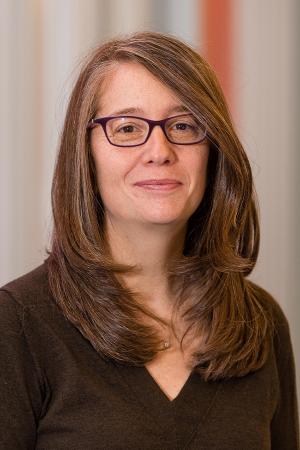Update: (April 29, 2022) The findings featured in this article have now been published in a peer-reviewed journal (BMJ Open). In the process of peer review, some revisions were made to the methodology used. In particular, new methods were used to determine whether the teachers who participated in the survey between February 3 to April 23, 2021, were representative of teachers in their school and for clarifying whether donor samples accurately reflected community risk. This was made possible thanks to new data that was not available at the time of the pre-print publication. These new, more rigorous, methods returned very similar results to the original pre-print, supporting the conclusion that, with mitigation measures in place, teachers were not at greater risk in a school setting than in their community. This work continues as the research team has gathered a new round of data in 2022 following the recent wave of the Omicron variant.
Researchers from BC Children’s Hospital, the University of British Columbia and Vancouver Coastal Health have found the risk of school staff acquiring SARS-CoV-2, the virus that causes COVID-19, in schools is no greater than for those who don’t work in schools.

In this study, launched in February 2021 and funded by the Government of Canada through its COVID-19 Immunity Task Force (CITF), investigators examined COVID-19 infection among Vancouver School District staff during the 2020-2021 school year. They tested school staff for SARS-CoV-2 antibodies (a sign of prior infection), whether or not they had felt symptoms, to determine how many had been exposed to the virus.
Of the 1,556 school staff who had their blood sample tested, 2.3 per cent tested positive for antibodies. This percentage was similar to the number of infections in a reference group of blood donors matched by age, sex and area of residence. The results confirm the low prevalence of SARS-CoV-2 infection among staff in the school setting.
“These findings show that, with appropriate mitigation strategies in place, in-person schooling is not associated with significantly increased risk of SARS-CoV-2 transmission for classroom-based staff compared to members of the general population,”
said Dr. Pascal Lavoie, principal investigator of the study, an investigator at BC Children’s Hospital, a pediatrician and associate professor in the Department of Pediatrics at UBC.

“Even when we account for asymptomatic infection using sensitive blood tests, the risk of SARS-CoV-2 being transmitted in schools overall remains very low,”
said Dr. David Goldfarb, co-investigator and lead author of the pre-print that has yet to be peer-reviewed. Dr. Goldfarb is an investigator and a medical microbiologist at BC Children’s Hospital and clinical associate professor in the Department of Pathology and Laboratory Medicine at UBC.
These finding are in line with those previously released by VCH public health.
Of the 1,689 school staff surveyed, 278 reported close contact with a student or co-worker who tested positive for COVID-19, but only five staff who were infected with SARS-CoV-2 believed they likely acquired the virus in the school setting.
Read the follow-up to this story
“The results suggest that only a few teachers and school staff contracted SARS-CoV-2, and most assume that they did not contract it at school and thought they caught it from friends or family,” said Dr. Lavoie.
The study also reports on positive viral polymerase chain reaction (PCR) tests in students and staff — the number of people who were tested and were found to be infected with SARS-CoV-2 at the time they were tested. Within the Vancouver School District, 0.98 per cent of the 47,280 students, and 1.3 per cent of the 7,071 staff attending the Vancouver School District received a diagnosis of COVID-19 between the start of the pandemic and March 4, 2021. In this study, school staff reported consistent rates of positive viral tests which are similar to the Vancouver School District — 1.3 per cent.
“We hope our findings will help inform school opening and closure policies moving forward,”

said co-lead researcher Dr. Louise Mâsse, an investigator at BC Children’s Hospital and professor in the School of Population and Public Health at UBC.
“We know how important in-person schooling is for our students, not only for learning, but also for their social, mental and physical well-being,” said Suzanne Hoffman, superintendent of schools for the Vancouver School District. “These results reaffirm that with the protocols we have in place, schools are safe places to teach and learn.”
“Our Task Force has funded three research projects looking at the risk of COVID-19 for school staff and this is one of them,” said CITF Leadership Group member Dr. Mel Krajden, professor of Pathology and Laboratory Medicine at UBC.
“This study highlights that COVID-19 in a school setting typically mirrors transmission from family and community contacts. As more and more Canadians are vaccinated, this will be expected to further reduce family and community based COVID-19 transmission. The results of this study are very timely as provincial governments across the country are planning and announcing back-to-school scenarios for the next school year. This and the results of other Task Force studies will help guide an evidence-based return to in-person teaching.”
Read the follow-up to this story here.
The research team is led by Dr. Lavoie, Dr. Mâsse, and also includes Dr. David Goldfarb, Dr. Vilte Barakauskas, Dr. Julie Bettinger, Dr. Tim Oberlander, Dr. Mike Irvine and Dr. Manish Sadarangani from BC Children’s and UBC, as well as Dr. Daniel Coombs from UBC’s Department of Mathematics, Dr. Eva Oberle and Dr. Anne Gadermann from UBC’s School of Population and Public Health, Dr. Agatha Jassem from BCCDC and Dr. Alex Choi, VCH.
A version of this story was originally published by the COVID-19 Immunity Task Force.




